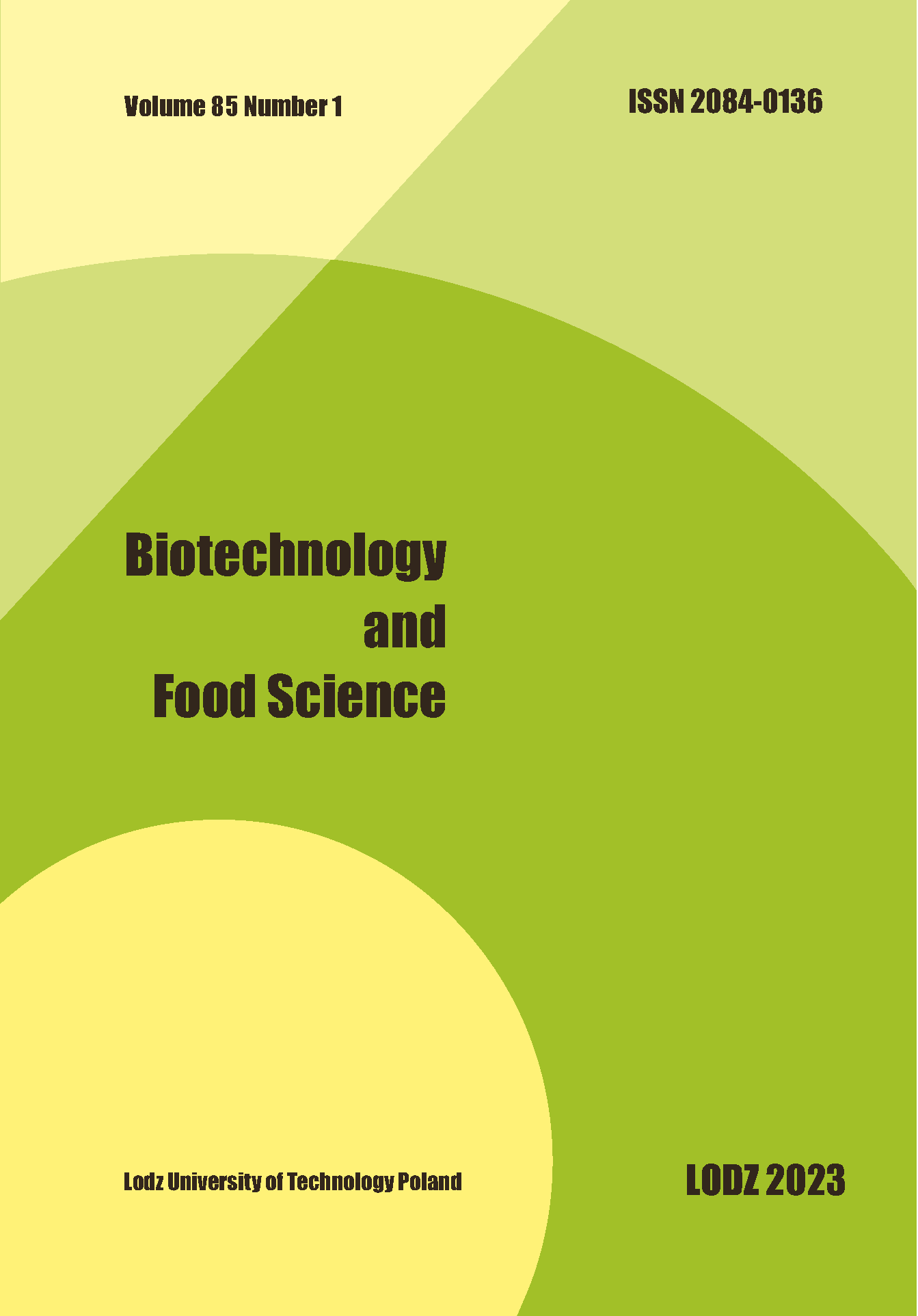Abstract
The study focused to develop an enzyme hand peeling. The first stage of the investigation dependent on selecting the qualities that the cosmetic should have. When creating the product, the assumption was made that it would have an exfoliating, moisturizing, firming and even-toning effect. The peeling was developed in several stages starting with the consideration of the cosmetic formulation, the selection of suitable raw materials and the execution of the formulation according to the adopted method. For the preparation of the peeling, the emollients used were so-called oily emollients, including sweet almond oil, Shea butter, coconut oil, oil/water (O/W) emulsifier, stabilizers, moisturisers, rheology modifier, filler, active substances, preservative and solvent. The peeling was prepared on the principle of O/W emulsion. The formulation was made using the classic "hot" method. More than a dozen trials were performed to obtain a product with the desired properties. Subsequently, the peeling was subjected to sensory and hedonistic analysis. Its density, viscosity and stability were evaluated. The formulation was also tested for pH.
The final scrub was characterized by an intense but pleasant fragrance, very easy spreading on the skin, light texture, pleasant sensation after use. Hedonistic research has shown that obtained enzyme peeling was fully acceptable in terms of application, color, consistency and feelings after use. The final cosmetic product was also characterised by poor moisturisation and too strong abrasiveness.
References
Sobczyk A. Pielęgnacja cery dojrzałej w warunkach domowych. Medyczne aspekty kosmetologii i dietetyki, 2018, 53-65.
Sikora E, Olszańska M, Ogonowski J. Chemia i technologia kosmetyków. Wydawnictwo Politechniki Krakowskiej, Kraków, Poland 2012, pp. 14-22.
Szepietowski J. Grzybice skóry i paznokci. Medycyna Praktyczna, Kraków, Poland 2001, pp. 4-12.
Ribeiro A, Estanqueiro M, Oliveira M, Sousa Lobo J. Main benefits and applicability of plant extracts in skin care products. Cosmetics 2015, 2: 48-65.
Cieślik-Boczula K, Jaszczyszyn A, Gąsiorowski K, Świątek P, Malinka W. Rola lamelarnych warstw lipidowych w procesie przenikania substancji przez skórę. Kosmetologia Estetyczna 2013, 2:19-22.
Goncalves S. Use of enzymes in cosmetics: proposed enzymatic peel procedure. Cos Active J 2021, 1:27-33.
Cruz M, Cruz M, Martins B, Corvo L, Gaspar M, Maria E. Enzimas em medicamentos e diagnósticos. Enzimas Em Biotecnol. Produção Apl. E Merc, Interciencia, Spain 2008, pp. 305–329.
Martini MC. Introduction a la dermopharmacie et a la cosmetologie. Lavoisier Tec & Doc, Lyon, France, 2011, pp. 55-64.
O’Connor AA, Lowe PM, Shumack S, Lim AC. Chemical peels: A review of current practice. Australas J Dermatol 2018, 59:171-181.
Mitchel RE, Chaiken IM, Smith EL. The complete amino acid sequence of papain. Additions and corrections. J Biol Chem 1970, 245: 3485-3492.
Amid A, Ismail NA, Yusof F, Salleh HM. Expression, purification, and characterization of a recombinant stem bromelain from Ananas comosus. Process Biochem 2011, 46:2232-2239.
Ferreira JF, Santana JCC, Tambourgi EB. The effect of pH on bromelain partition from Ananas comosus by PEG4000/phosphate ATPS. Braz Arch Biol Technol 2011, 54:125-132.
Baeyens-Volant D, Matagne A, El Mahyaoui R, Wattiez R, Azarkan M. A novel form of ficin from Ficus carica latex: Purification and characterization. Phytochemistry 2015, 117: 54-167.
Cho UM, Choi DH, Yoo DS, Park SJ, Hwang HS. Inhibitory effect of ficin derived from fig latex on inflammation and melanin production in skin cells. Biotechnol Bioprocess Eng 2019, 24:288-297.

